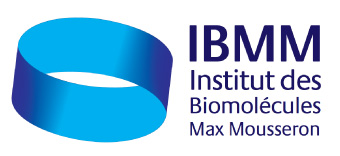Catalytic enantioselective synthesis of planar-chiral transition-metal complexes and their application in organic transformations
Séminaire Chimie ED459
Prof. Masamichi
Le Jeudi 12 Juillet 2018 à 14h
ENSCM, Amphithéâtre Godechot (campus Balard, 240 av. Émile-Jeanbrau)
Date de début : 2018-07-12 14:00:00
Date de fin : 2018-07-12 15:30:00
Lieu : ENSCM amphi Godechot (campus Balard, 240 av E. Jeanbrau)
Intervenant : Prof. Masamichi
Department of Natural Science, Graduate School of Science and Technology, Tokushima University, Japan
Planar-chiral transition-metal complexes, which include properly substituted metallocenes/half-metallocenes and (π-arene)chromium complexes, are important chiral scaffolds in organic and organometallic chemistry. In spite of the increasing utilities of these molecules in asymmetric synthesis, their preparative methods in optically active forms are rather limited. Whereas the classical methods typically require stoichiometric chiral reagents or auxiliaries, asymmetric catalysis of preparing such planar-chiral molecules has been virtually unexplored up until very recently.[1]
Olefin-metathesis reactions using well-defined catalysts, such as the Grubbs’ ruthenium catalysts and the Schrock’s molybdenum catalysts, have been powerful tools in organic synthesis and we[2] and others have demonstrated their usefulness in the modulation of metal-containing compounds as well. In 2002, we reported preparation of [4]metallocenophanes by the ring-closing metathesis reaction of 1,1’-diallylmetallocenes.[2a] The Mo-catalyzed asymmetric ring-closing metathesis (ARCM) was highly effective for enantioselective synthesis of the various planar-chiral ferrocenes giving the RCM products in up to 99% ee.[3] The similar method could be applied to the asymmetric synthesis of (π-arene)chromium(0) complexes[4] as well as (η5-cyclopentadienyl)manganese(I) complexes[5] with excellent enantioselectivity. Scope and limitation of these methods as well as applications of the planar-chiral products in asymmetric organic transformations will be described in detail.
Publications from our group in this project
1. Reviews: (a) Synthesis 2009, 1761; (b) Tetrahedron Lett. 2015, 56, 1751.
2. (a) J. Am. Chem. Soc. 2002, 124, 9068; (b) Organometallics 2003, 22, 1174; (c) Organometallics 2008, 27, 6565; (d) J. Organomet. Chem. 2011, 696, 3987; (e) Organometallics 2013, 32, 6593; (f) Adv. Synth. Catal. 2015, 357, 2255.
3. (a) Organometallics 2006, 25, 5201; (b) Pure Appl. Chem. 2008, 80, 1109; (c) J. Am. Chem. Soc. 2010, 132, 2136; (d) Chem. Eur. J. 2013, 19, 4151; (e) Organometallics 2015, 34, 1197; (f) Org. Lett. 2015, 17, 2286; (g) ACS Cat. 2016, 6, 1308.
4. (a) Angew. Chem. Int. Ed. 2012, 51, 2951; (b) J. Am. Chem. Soc. 2014, 136, 9377; (c) Chem. Eur. J. 2015, 21, 4954.
5. (a) J. Am. Chem. Soc. 2017, 139, 1545; (b) Organometallics 2017, 36, 1430; (c) Organometallics 2017, 36, 4061.
Contact local ICGM : Dr. Florian
